Clancy Tucker's Blog, page 208
October 11, 2016
12 October 2016 - IVAN MILAT - BACKPACKER MURDERER

IVAN MILAT- BACKPACKER MURDERER -
G'day folks,
Ivan Milat is best known as the Backpack Killer, convicted of seven murders of backpackers in Australia.
Synopsis
Ivan Milat was born December 27, 1944, in Guildford, Australia, to a large immigrant Yugoslav family. From the age of 17, Milat was in trouble with the police, but it didn't come close to the seven murders he would be convicted for committing in 1996. Milat became known as the Backpack Killer after being found guilty of seven gruesome murders, though suspected of more.
Ivan Robert Marko Milat was born in Australia on December 27, 1944, one of 14 children in an extended Yugoslavian immigrant family. Family life was rural and insular, and the Milats kept to themselves, making reliable information about Ivan Milat's upbringing difficult to obtain. Interviews with his brother, Boris, after Milat's trial, indicate that he exhibited psychopathic tendencies early on, though other family members dispute this. Milat was described as a good-looking, muscular boy, who had a fascination for hunting and guns, and took great care of his appearance. His parents were hard working and strict. With 14 children to manage, discipline was difficult, and Milat and his brothers had a reputation for lawlessness in their neighborhood. The family endured numerous police visits to their farm as the children grew older.
From the age of 17 Milat was constantly in trouble with both the police and the courts, on charges as varied as housebreaking, car thefts and armed robberies.
In 1971, Milat was put on trial for the alleged rape of two female hitchhikers, who testified that he had been armed with a knife during the attacks. He was acquitted on the rape charges when the prosecution failed to make a convincing case against him.

There has been much speculation about the true number of Milat's victims, given that he has always maintained his innocence, but the luckiest of them was certainly British backpacker Paul Onions, who was hitchhiking south from Sydney, in search of work, and was picked up by Milat on January 25, 1990.
Milat was initially very friendly, introducing himself as "Bill," but Onions found Milat's personal questions about his plans unnerving, and he became concerned for his safety when Milat began ranting, and making racist and xenophobic remarks. When Milat pulled his car to the side of the road, Onions tried to get out, but Milat pulled out a revolver and told him to put on his seatbelt. Onions managed to bolt for safety, leaving his backpack, which contained all his possessions and passport.
Despite Milat's threat that he would shoot him, he managed to flag down a passing car, which took him to the nearest police station so that he could report the incident. He returned to Sydney to replace the missing passport, and eventually returned to the UK, not yet aware of his narrow escape.
The first of Milat's less fortunate victims to be discovered were British backpackers, Caroline Clarke and Joanne Walters. They were found in an area of the Belangalo State Forest known as Executioners Drop, by orienteering enthusiasts who were out on their weekly run, on September 19, 1992. This location was not far from the area where the attack on Paul Onions had occurred in 1990.
Both girls had been missing since May of that year, when they had teamed up to look for work south of Sydney. Joanne Walters had been stabbed repeatedly; including one wound to her spine that, it was believed, might have paralyzed her while the killer continued his vicious attack. The zip of her jeans had been undone, but the top button was still fastened, as if she had been partially stripped and sexually assaulted, then buttoned up hastily after the attack. Her remains were too badly decomposed to actually establish whether a sexual attack had occurred. Caroline Clarke, as well as being stabbed repeatedly, had been shot in the head ten times. She also had a similar spinal wound to Walters. Four bullets that remained inside her skull were preserved for forensic analysis, and detectives were confident that they would be able to use these to track the weapon responsible.
A primitive brick fireplace had been constructed near the bodies, and cigarette butts and spent .22-caliber cartridge cases were also recovered from the scene. An extensive search of the surrounding area produced no more bodies at that time, and the possibility that a serial killer was on the loose, although speculated in the press, was denied by the police authorities. Despite the abundance of forensic evidence, police made little progress over the following weeks and sought the assistance of a forensic psychiatrist, Dr. Rod Milton. He concluded that the killer was in his mid thirties, with a history of aggression, was familiar with the surrounding terrain and motivated by the pleasure of inflicting pain.
Furthermore, he did not believe that a serial killer was responsible, although it was possible that the killer might have an assistant. Police progress continued to be slow, as all leads were painstakingly followed, including a thorough investigation of all suspicious disappearances over the previous decade.
The discovery of the second set of bodies, in October 1993, injected new life into a case that had become stale despite the best investigative efforts. The badly decomposed remains were those of Australian nationals James Gibson and Deborah Everist, who had gone missing in 1989. Despite the environmental damage wrought on the clothing, Gibson's zipper was intact; it was open, but with the top button fastened, in a similar manner to Joanne Walters. Post-mortem examinations again revealed paralyzing spinal knife wounds, inflicted in a similar manner to the earlier British victims.
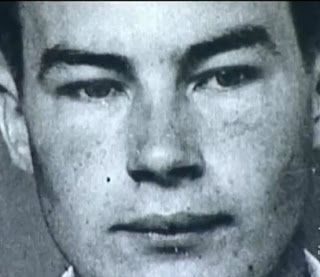
Crime scene similarities included a small fireplace built near the bodies, making the police more certain that they were dealing with the same killer, and Superintendent Clive Small was placed in overall charge of the investigation, setting up a large task force to progress the investigations. A massive manual search of the extended Belangalo Forest area was initiated, and it took almost a month before the next victim was found, on November 1. German national Simone Schmidl, had been missing since January 1991, when she had been planning to hitchhike south from Sydney in search of work. The trademark fireplace and discarded .22 shells were close by. There was no doubt she had fallen victim to the same killer, showing the now-familiar spinal injury.
Three days later the exhaustive search yielded the final two victims, German nationals Anja Habschied and her boyfriend, Gabor Neugebauer, who had been missing since just after Christmas 1991. The boy's jeans had been unzipped, but with the button fastened, and he had been strangled, as well as shot numerous times. The recovered bullets were a perfect match to previous crime scenes. The girl's body was missing its skull completely, which appeared to have been severed by a machete or sword.
Given the new bodies, Superintendent Small was forced to admit to the media that the police were looking for a serial killer, confirming what many already believed. The wide range of methods employed by the killer, including beating, strangulation, shooting, stabbing and decapitation, as well as the sexual assault of both male and female victims, made it difficult to narrow down the suspect list, and police were also hampered by the sheer volume of calls from concerned citizens, who swamped the task force with information.
Various independent reports had led the police to develop suspicions about the Milat family and, in particular Ivan Milat, but they had no firm evidence linking Milat to the crimes. The international media interest served its purpose, however, when Paul Onions, the only one of Milat's victims to escape, contacted Australian authorities in April 1994, with information about his 1990 attack. His account was further corroborated by an independent call from the woman who had rescued Onions and driven him to the police station, and police recognized quickly that, if Onions could identify Milat as his attacker, then they could perhaps tie him to the other murders.
Onions was flown out to Australia, where he identified Milat from a video line-up, giving police the excuse they needed to seek a warrant for the search of various Milat family properties. A simultaneous raid was carried out in the early hours of May 22, 1994, which revealed a huge amount of evidence linking Milat to the crimes, including personal effects of many of the victims, including clothing, sleeping bags, and other camping equipment, as well as vast quantities of ammunition. They also found parts of disassembled weapons, including a .22 caliber rifle. A long curved cavalry sword, suitable for the beheading of Anja Habschied, was found in a locked cupboard at the home of Milat's mother.
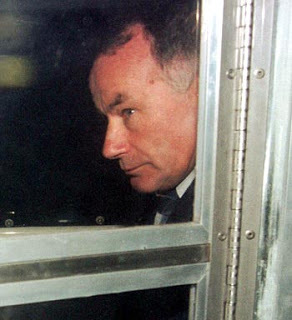
Milat was arrested and taken into custody for questioning, where he was evasive and uncooperative. He was initially charged with the attack on Paul Onions, then subsequently with the seven murders, once ballistic evidence matched his weapon to the attacks. He was remanded in custody to await trial. He engaged the same lawyer who had represented him during his 1971 rape trial and acquittal, John Marsden, but fired him when he advised Milat to plead guilty.
Milat's trial was set for June 1995, but the case was delayed by wrangles over legal aid, and finally went ahead in the full glare of international publicity in March 1996. Milat was charged with the seven murders, as well as the attack on Paul Onions, and pleaded not guilty to all charges.
Onions was the first prosecution witness, who was followed by testimony from the family members of the victims. Then followed detail of the hundreds of exhibits and scene of crime photos, as well as expert witness testimony. The prosecution case took 12 weeks to present.
The defense called Milat to the stand; he denied any involvement in the killings, but performed poorly under cross-examination, making a bad impression on the jury. The defense tried to imply that other members of the Milat family had committed the crimes, and had then set Ivan Milat up, but the case presented was not credible.
On July 27, 1996, following a 15-week trial, the jury returned after three days of consideration, finding Milat guilty on all charges. He was sentenced to six years imprisonment for the attack on Paul Onions and seven consecutive life sentences for each of the murders. When asked if he had any comment, Milat continued to protest his innocence.
Milat was first incarcerated in Maitland Prison, where he would stay for nearly a year. In May 1997 authorities foiled a well-planned jailbreak attempt masterminded by Milat. After discovering the plot, the inmates were separated. His accomplice George Savvas was found hanged in his cell the next morning. He was then transferred to the maximum-security wing of Goulburn Prison, near Sydney. After a blade was discovered in his cell, Milat spent time in solitary confinement. Milat has always maintained his innocence, and later staged self-mutilation attacks and hunger strikes in a bid to get his appeals heard.
In July 2001 his initial appeal against his sentence was denied.
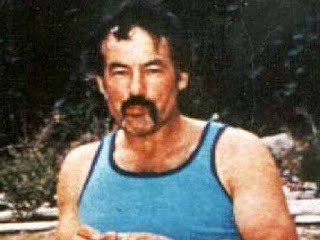
Other Developments
Police maintain that Milat may have been involved in many more murders than the seven for which he was convicted. In the summer of 2001, Milat was ordered to give evidence at an inquest into the disappearances of three other female backpackers, but no case has been brought against him, due to lack of evidence. Similar inquiries were launched in 2003, in relation to the disappearance of two nurses and again in 2005, relating to the disappearance of hitchhiker Annette Briffa, but no charges have resulted.
On November 8, 2004, Ivan Milat gave a televised interview, in which he denied that any of his family had been implicated in the seven murders.On July 18, 2005, Milat's former lawyer, John Marsden, who had been fired before the murder trial, made a deathbed statement, in which he claimed that Milat had been assisted by an unknown woman, in the killings of the two British backpackers.
On September 7, 2005, his final appeal was refused, and Milat is likely to remain in prison for the rest of his natural life.
In May 2015, Milat's brother Boris came forward and said that Milat was responsible for another shooting: that of taxi cab driver Neville Knight, in 1962. Steve van Aparen, a former homicide detective who serves as a consultant with the LAPD and FBI, among others, was called in to conduct polygraph tests with Boris Milat and Allan Dillon, the man convicted of paralyzing Knight with a gunshot to the back those many years ago. The tests convinced Aperen that both men are telling the truth and that Ivan Milat did in fact shoot Knight.

Clancy's comment: With all the media hype, and loose words offered by politicians to fire up the community to fear Muslims and terrorists, I often remind people, including some very close friends, that the worst murderers in Australia have all been home-grown, and white.
I'm ...

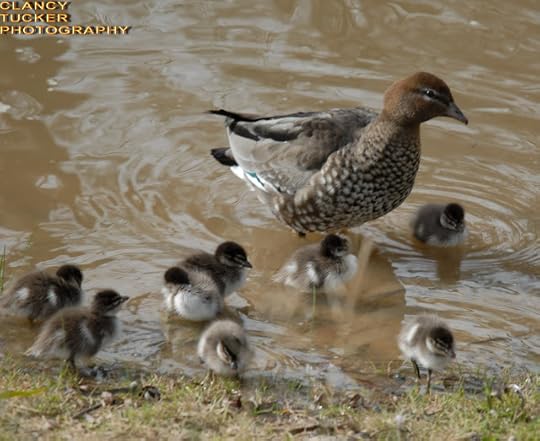
Published on October 11, 2016 13:28
October 10, 2016
11 October 2016 - ROLLING PICTURES
[image error]
ROLLING PICTURES
G'day folks,
Yep, time to check out some more pictures that move.
[image error]
[image error]
[image error]













[image error]



Clancy's comment: Cats seem to feature often, eh? Man, I could watch those two kittens for hours.
I'm ...


ROLLING PICTURES
G'day folks,
Yep, time to check out some more pictures that move.
[image error]
[image error]
[image error]













[image error]



Clancy's comment: Cats seem to feature often, eh? Man, I could watch those two kittens for hours.
I'm ...


Published on October 10, 2016 13:19
October 9, 2016
10 October 2016 - CONFUSING WORDS

CONFUSING WORDS
G'day folks,
Time for some more of those tricky words that trip us up from time to time.
figuratively / literally
Figuratively is an adverb that means metaphorically or symbolically: “Happening upon the shadowy figure, they figuratively jumped out of their shoes.”
Literally is an adverb that means word for word or according to the exact meaning of the words: “I translated the Latin passage literally.”
foreword / forward
Foreword is a noun that means an introductory note or preface: “In my foreword I explained my reasons for writing the book.”
Forward is an adjective or adverb that means toward the front: “I sat in the forward section of the bus. Please step forward when your name is called.”
Forward is also a verb that means to send on: “Forward the letter to the customer's new address.”
hanged / hung
Hanged is the past tense and past participle of hang when the meaning is to execute by suspending by the neck: “They hanged the prisoner for treason.” “The convicted killer was hanged at dawn.”
Hung is the past tense and participle of hang when the meaning is to suspend from above with no support from below: “I hung the painting on the wall.” “The painting was hung at a crooked angle.”

information / knowledge
Information, a noun, is a fact or knowledge about a specific event or subject.Knowledge, a noun, means having information and understanding it through experience.
it's / its
It's is a contraction for it is, whereas its is the possessive form of it: “It's a shame that we cannot talk about its size.”
laid / lain / lay
Laid is the past tense and the past participle of the verb lay and not the past tense of lie.
Lay is the past tense of the verb lie and lain is the past participle: “He laid his books down and lay down on the couch, where he has lain for an hour.”
melody / tune
A melody, which is a noun, is a group of notes in a certain order that results in a sweet or agreeable sound.
A tune, a which is a noun, is an easily remembered melody.
part / portion
Part, a noun, is piece of something that has been divided. When all the pieces are put together, they equal a whole.
A portion, a noun, is a share or part used or given in a specific way.
passport / visa
A passport, which is a noun, is a document, usually a booklet, that states a person's official identity and citizenship and allows that person to visit another country.
A visa, which is a noun, is stamped on a passport. It shows that the passport has been examined by the officials of a country and permits entry into that country.

Clancy's comment: I hope these have been helpful.
I'm ...


Published on October 09, 2016 14:56
October 8, 2016
9 October 2016 - THE CUTE COATI

THE CUTE COATI
G'day folks,
Here is an animal I've never heard of. The coati, genera Nasua and Nasuella, also known as the coatimundi /koʊˌɑːtᵻˈmʌndi/, hog-nosed coon, Mexican tejón, cholugo, or moncún, Guatemalan and Costa Rican pizote, Colombian cusumbo, and other names, is a member of the raccoon family.
These sociable tree-climbers are of a mischievous nature and have a love for digging.
Coatis are classed as ‘least concern’ by the International Union for Conservation of Nature and Natural Resources (on the IUCN ‘red list’), but the IUCN estimates that some White-nosed Coati populations in the wild are decreasing. Threats to these populations include habitat loss and illegal poaching. In New Mexico they are classed as an endangered species and are protected.
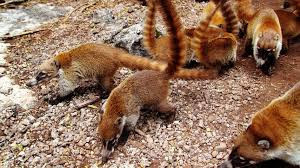
Coatis belong to the larger raccoon family, which comprises 18 species, all native to the Americas. The White-nosed Coati is native to Arizona, Texas, New Mexico, Mexico, Central America and Colombia.
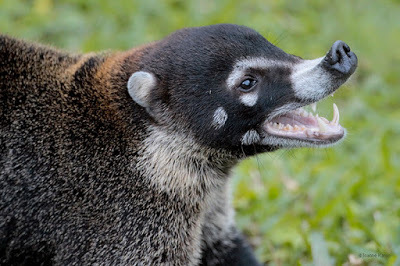
Coatis are omnivorous and are often seen feeding on invertebrates, fruits, small vertebrates (such as lizards and rodents) and eggs. Although coatis are skilled climbers, using their long tails as balancing rods, most foraging is conducted on the ground where they dig among the leaf litter, exposing food.
Male coatis have solitary lives, while the females live in social groups. During the breeding season a dominant male of the area will convince the females to accept him by grooming them. Once the breeding season ends he is driven away by the group, leaving the females to raise the young.
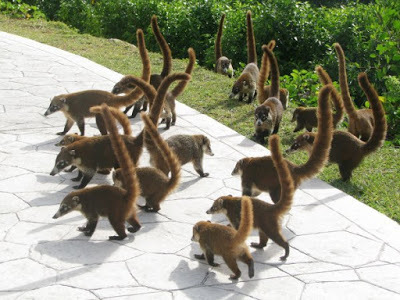
A new mother will typically keep her kittens isolated in her nest for 6 to 10 weeks before rejoining the band. Upon returning to the group, all the adult females cooperate in looking after the young. While mother is away searching for food, the other females will keep an eye on her kittens, providing protection from predators.

Clancy's comment: They look cute, but those teeth look pretty dangerous as well.
I'm ...


Published on October 08, 2016 13:43
October 7, 2016
8 October 2016 - WEIRD STUFF

WEIRD STUFF
G'day folks,
Time for some more weird signs and things to make you smile.

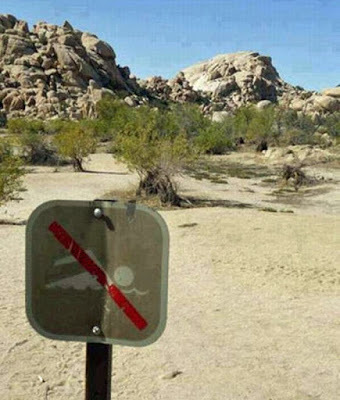
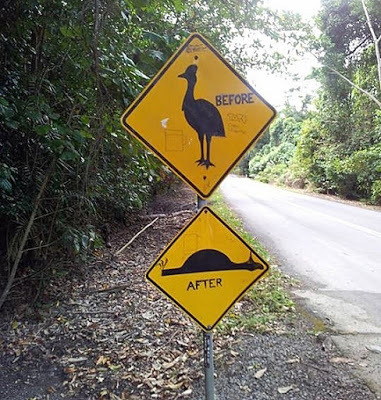


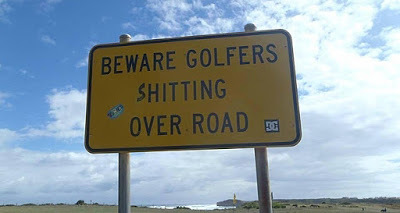

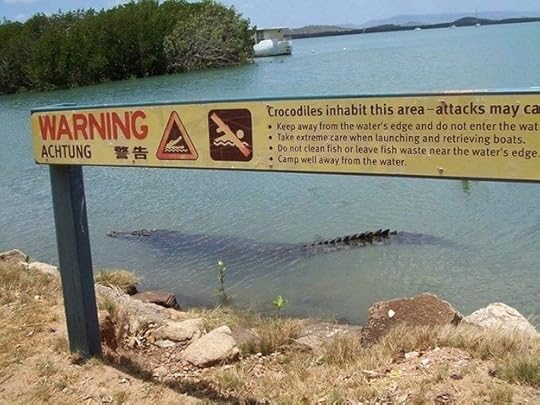
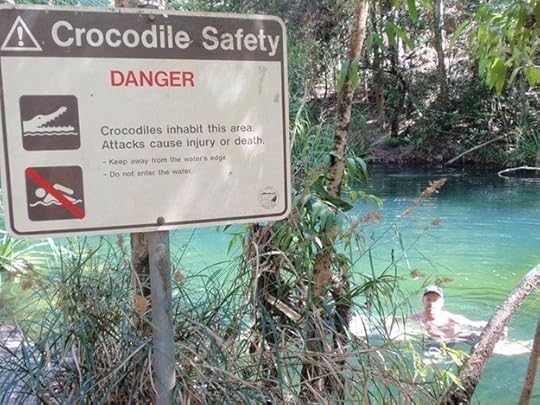


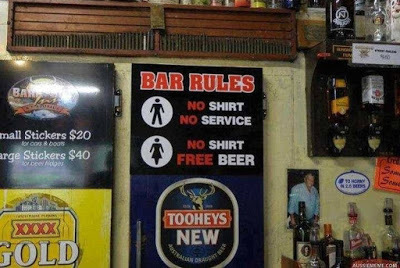




Clancy's comment: As you can see, many come from Australia. We are not all crazy here, just some of us ...
I'm ...

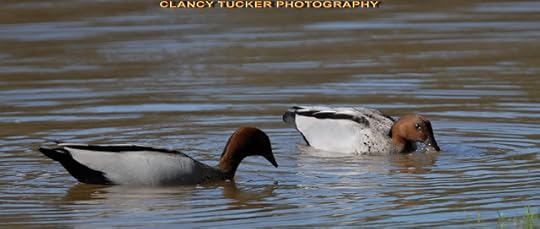
Published on October 07, 2016 13:55
October 5, 2016
6 October 2016 - SIR JOSEPH BANKS

SIR JOSEPH BANKS
G'day folks,
Sir Joseph Banks, 1st Baronet, GCB, PRS was a British naturalist, botanist and patron of the natural sciences. Banks made his name on the 1766 natural history expedition to Newfoundland and Labrador.
Sir Joseph Banks, Bt, KCB, FRS - Born in London, UK, 13 February 1743; died London, 19 June 1820.
The only son of a wealthy land-owning family. From an early age, his declared passion was natural history, and in particular, botany. Shortly after inheriting his family's fortune in the early 1760s he chose to pursue this passion to the full. In 1766 he travelled to Newfoundland and Labrador to collect plants, animals and rocks and was elected a Fellow of the Royal Society in the same year.
When the Royal Society was successful in initiating Captain Cook's 1768 expedition to Tahiti for astronomical observations, Banks obtained permission from the Admiralty to join the venture. For him, this was like a present-day scientist being given the chance of a trip to another planet, a chance to study new plants in unknown lands.
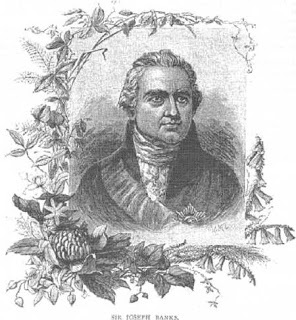
They made collections and observations in South America, Tahiti and New Zealand before reaching Australia. His major landfalls on the eastern coast of Australia were at Botany Bay (28 April - 5 May 1770) and at the Endeavour River (17 June - 3 August). By now the
'collection of plants was . . . grown so immensely large that it was necessary that some extraordinary care should be taken of them least they should spoil . . .'
The plant material collected and sorted on the voyage was extensive, with the herbarium specimens accounting for about 110 new genera and 1300 new species.
After his triumphant return from this voyage, Banks travelled to Scotland, Wales, Holland and Iceland, collecting more and more 'curiosities'. Among a host of other activities, including the running of his estates, he controlled the Royal Botanic Gardens, Kew and was a Trustee of the British Museum. In 1778 he also became President of the Royal Society, an office which he held until his death in 1820. He was knighted in 1781.

Although the suggestion by Linnaeus that the new country should be named 'Banksia' was not adopted, Banks's name was bestowed upon a genus of Australian plants and he made his mark upon Australian history in other ways. When the British government was casting about for a suitable place to establish a penal colony, Banks was an advocate for Botany Bay.
After the settlement was established at Sydney Cove, he encouraged further investigation of the natural history of the area and became the acknowledged authority on matters relating to New South Wales. His impact on the study of natural history in both Britain and Australia cannot be overestimated.

Clancy's comment: Go, Sir Joseph! Amazing man, eh?
I'm ...

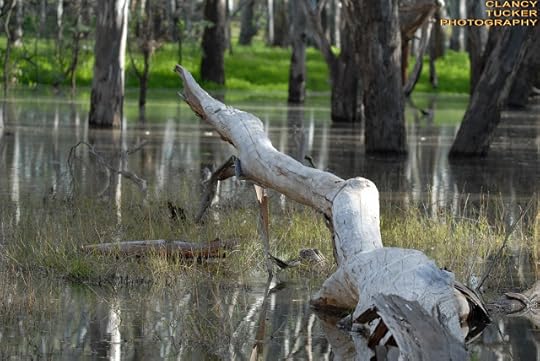
Published on October 05, 2016 13:53
October 4, 2016
5 October 2016 - MEERKATS

MEERKATS
G'day folks,
I am pleased to introduce one of my favourite animals. The meerkat or suricate is a small carnivoran belonging to the mongoose family. It is the only member of the genus Suricata.
These animals love to dig, and humans love to watch them!
Meerkats are not a threatened species, and it is unknown whether wild populations are increasing or decreasing.
There are three subspecies of meerkat: red, grey and slender-tailed, the subspecies at Zoos Victoria, Australia.

Meerkats live in southern Africa, which is dominated by the Kalahari Desert. Countries where they are found include Angola, Botswana, Namibia and South Africa.

They are small: 26–28cm (with a 22cm tail).

Finding safety in numbers, meerkats live in groups of 10–30, with a female in charge of each smaller family unit. Meerkats spend most of the day foraging for food. A lookout stands on a high viewpoint until relieved by another meerkat. Danger can come from threats such as jackals, vultures, snakes, servals or hawks. Meerkats have a wide range of vocalisations, and warning calls are specific to each form of danger. The pack may band together to threaten a predator or rival pack with much hissing and jumping.

Meerkats are omnivorous, and their diet includes pupae and larvae of moths, butterflies, beetles and flies; termites; crickets; spiders; scorpions; and other invertebrates that they excavate. They also eat lizards, small snakes, birds, eggs and mice. In dry areas they get moisture by chewing local melons, roots and tubers.

Clancy's comment: These cute animals are used in an advertisement campaign in Australia, and I laugh every time I see one of those adverts. Gotta love 'em, eh? Now, check out this video ....

comparethemarket
I'm ...


Published on October 04, 2016 13:45
October 3, 2016
4 October 2016 - VERY CUTE INDEED

VERY CUTE INDEED
G'day folks,
It's time to be distracted from the ugly and stressful side of life. Check out these cute lil things.



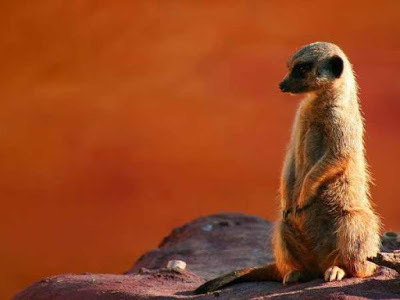
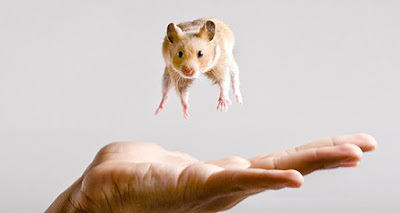


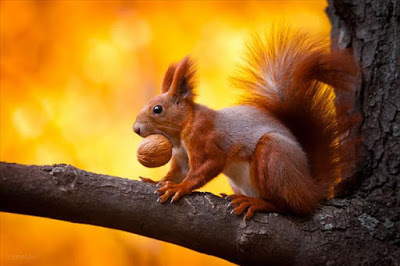

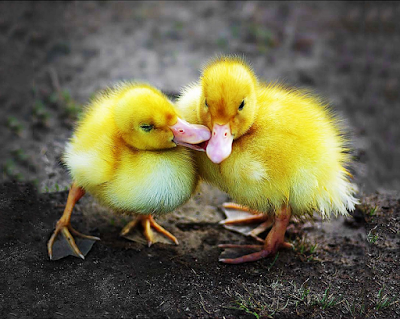




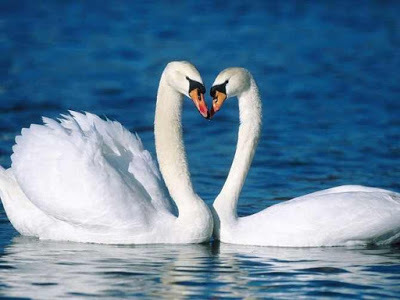





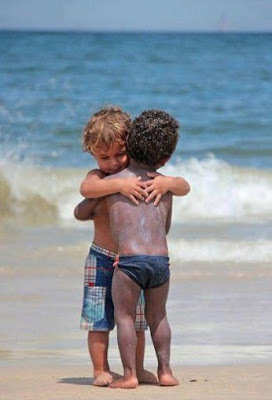

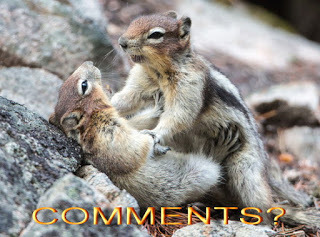
Clancy's comment: Pretty damn cute, eh? Just love those meerkats.
I'm ...

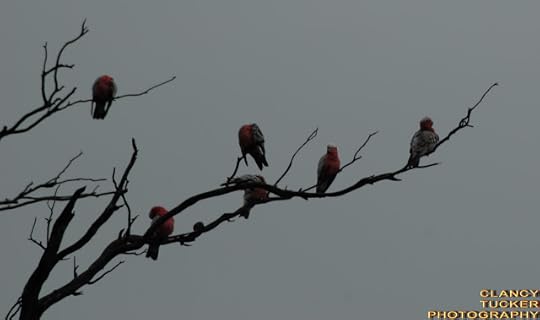
Published on October 03, 2016 14:49
October 2, 2016
3 October 2016 - J.K. ROWLING

J.K. ROWLING
G'day folks,
This person needs no introduction. Joanne "Jo" Rowling, OBE, FRSL, pen names J. K. Rowling and Robert Galbraith, is a British novelist, screenwriter and film producer best known as the author of the Harry Potter fantasy series; one of the most popular book and film franchises in history.
Synopsis
Born in Yate, England, on July 31, 1965, J.K. Rowling came from humble economic means before writing Harry Potter and the Sorcerer's Stone, a children's fantasy novel. The work was an international hit and Rowling wrote six more books in the series, which sold hundreds of millions of copies and was adapted into a blockbuster film franchise. In 2012, Rowling released the novel The Casual Vacancy.
Joanne Rowling, best known as J.K. Rowling, was born on July 31, 1965, in Yate, England. She adopted her pen name, J.K., incorporating her grandmother's name, Kathleen, for the latter initial (Rowling does not have a middle name).
As a single mother living in Edinburgh, Scotland, Rowling became an international literary sensation in 1999, when the first three installments of her Harry Potter children's book series took over the top three slots of The New York Times best-seller list after achieving similar success in her native United Kingdom. The phenomenal response to Rowling's books culminated in July 2000, when the fourth volume in the series, Harry Potter and the Goblet of Fire, became the fastest-selling book in history.
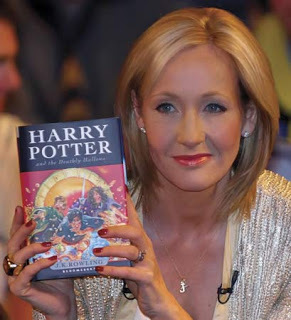
A graduate of Exeter University, Rowling moved to Portugal in 1990 to teach English. There, she met and married the Portuguese journalist Jorge Arantes. The couple's daughter, Jessica, was born in 1993. After her marriage ended in divorce, Rowling moved to Edinburgh with her daughter to live near her younger sister, Di. While struggling to support Jessica and herself on welfare, Rowling worked on a book, the idea for which had reportedly occurred to her while she was traveling on a train from Manchester to London in 1990.
After a number of rejections, she finally sold the book, Harry Potter and the Philosopher's Stone (the word "Philosopher" was changed to "Sorcerer" for its publication in America), for the equivalent of about $4,000. The book, and its subseqent series, chronicled the life of Harry Potter, a young wizard, and his motley band of cohorts at the Hogwarts School of Witchcraft and Wizardry.
By the summer of 2000, the first three Harry Potter books, Harry Potter and the Sorcerer's Stone, Harry Potter and the Chamber of Secrets and Harry Potter and the Prisoner of Azkaban earned approximately $480 million in three years, with over 35 million copies in print in 35 languages. In July 2000, Harry Potter and the Goblet of Fire saw a first printing of 5.3 million copies and advance orders of over 1.8 million. After a postponed release date, the fifth installment, Harry Potter and the Order of the Phoenix, hit bookstores in June 2003.
The sixth installment, Harry Potter and the Half-Blood Prince, sold 6.9 million copies in the United States in its first 24 hours, the biggest opening in publishing history. Prior to its July 2007 release, the seventh and final installment in the Harry Potter series, Harry Potter and the Deathly Hallows, was the largest ever pre-ordered book at Barnes & Noble and Borders bookstores, and at Amazon.com.
Rowling, now Britain's 13th wealthiest woman—wealthier than even the Queen—does not plan to write any more books in the series, but has not entirely ruled out the possibility.

A film version of Harry Potter and the Sorcerer's Stone, directed by Chris Columbus and starring Daniel Radcliffe, Emma Watson and Rupert Grint, was released in November 2001. In its opening weekend in the U.S., the film debuted on a record 8,200 screens and smashed the previous box-office record, earning an estimated $93.5 million ($20 million more than the previous recordholder, 1999's The Lost World: Jurassic Park). It ended the year as the top-grossing movie of 2001. The second and third films in the series — Harry Potter and the Chamber of Secrets (2002) directed by Columbus and Harry Potter and the Prisoner of Azkaban (2004) directed by Alfonso Cuarón — each enjoyed similar record-breaking box-office success.
Harry Potter and the Goblet of Fire, directed by Mike Newell, was released in 2005. The fifth movie, Harry Potter and the Order of the Phoenix, directed by David Yates, was released in 2007, featuring a script by screenwriter Michael Goldenberg, who replaced Steve Kloves, writer of the first four films. The film version of Harry Potter and the Half-Blood Prince, directed by Yates, was released in July 2009, followed by the final film which was released in two installments — Harry Potter and the Deathly Hallows Part 1 (2010) and Part 2 (2011), also directed by Yates.

Although J.K. Rowling's Harry Potter series is finished, the author continues to work on more written works. The Tales of Beedle the Bard, a collection of five fables mentioned in the Harry Potter book series, was released on November 4, 2008—at a tea party for 200 schoolchildren at the National Library of Scotland in Edinburgh. Rowling donated all royalties from the book to the Children's High Level Group (which has been renamed Lumos), a charity that Rowling co-founded to support institutionalized children in Eastern Europe.
Rowling's first book aimed at adults, The Casual Vacancy, was published in September 2012. The novel, a dark comedy about a local election in the small English town of Pagford, received mixed reviews. A book review in The New York Times called the novel "disappointing" and "dull." A review in The Telegraph, however, gave the book three out of five stars, stating that the novel is " . . .Jane Austen herself would admire the way [Rowling] shows the news of Barry’s death spreading like a virus round Pagford."
In 2013, Rowling broke into a new genre: crime fiction. But this new work involved a mystery all of its own. She published the mystery novel Cuckoo Callingthat April under the pen name Robert Galbraith. In its first few months of release, the novel had modest sales and received positive reviews. Sales for the work skyrocketed in July when its author's identity was discovered. According to Bloomberg News, Rowling said that "I had hoped to keep this secret a little longer, because being Robert Galbraith has been such a liberating experience. It has been wonderful to publish without hype or expectation, and pure pleasure to get feedback under a different name."
Later that year, Rowling announced a new film series with Warner Bros.
The first film in the series, which is set for release in November 2016, will be based on Rowling's Hogwarts textbook Fantastic Beasts and Where to Find Them and stars Eddie Redmayne. According to Entertainment Weekly, Rowling explained that the movies draw from "the worldwide community of witches and wizards where I was so happy for 17 years," but "is neither a prequel nor a sequel to the Harry Potter series, but an extension of the wizarding world."
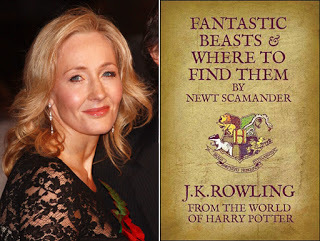
Rowling is also reportedly working on a new Harry Potter-related book. On her website, she announced that she will write "an encyclopedia of Harry's world" and the royalties from this volume will be donated to charity.
In 2014, Rowling published a short story about grown-up Harry Potter and a Hogwarts school reunion on her website Pottermore . Since the site launched, she’s added more stories and information about all things Harry Potter.
In June 2016, Harry Potter and the Cursed Child, a two-part play written by by Jack Thorne and director John Tiffany and based on Rowling’s story, debuted on the London stage to a sold-out audience. Although she had originally stated Harry Potter and the Deathly Hallows would be the final book in the series, the play features an adult Harry Potter and has been officially touted as the eight installment of the series. The play’s cast differs from that of the original films. The next month, as with her previous books, fans lined up at book stores pending the midnight release of Jack Thorne’s script for Harry Potter and the Cursed Child.
Personal Life
On December 26, 2001, J.K. Rowling married anesthetist Dr. Neil Murray at the couple's home in Scotland. They have two children together, David (born in 2003) and Mackenzie (born in 2005). Rowling has one child, Jessica (born 1993), from her previous marriage.

Clancy's comment: She is reputed to be the tenth richest PERSON in the world. Mm ... What can I say? Good luck to her. She has achieved more than we authors ever dream about.
I'm ...


Published on October 02, 2016 14:00
October 1, 2016
2 October 2016 - MORE WISE DOGS

MORE WISE DOGS
G'day folks,
Welcome to some more great quotes about dogs and their masters.












Clancy's comment: Not much one can say, eh?
I'm ....

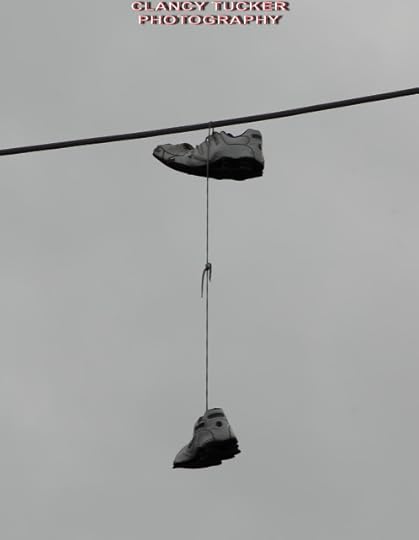
Published on October 01, 2016 14:58



